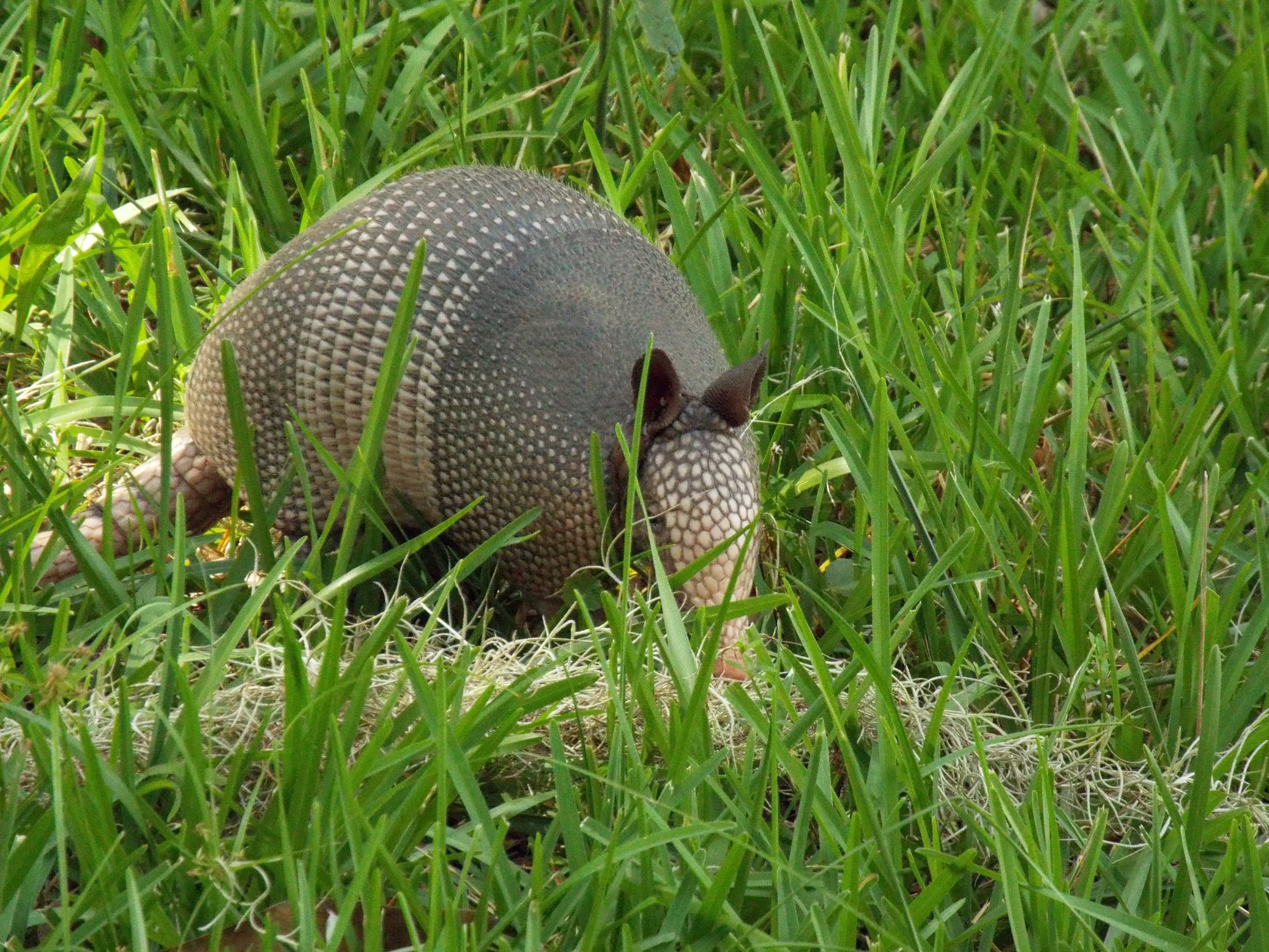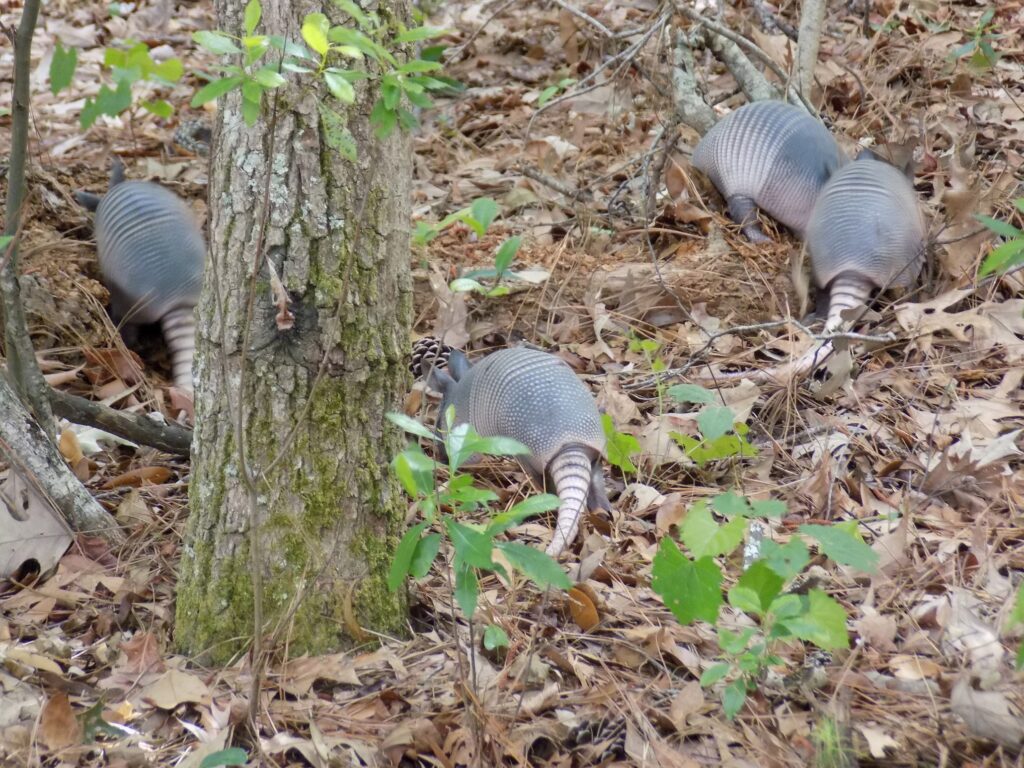




This week for Flora and Fauna Friday, we have an interesting mammal on the docket and one with quite the poor reputation. This week we’re talking about the Nine-banded Armadillo (Dasypus novemcinctus). The Nine-banded Armadillo is very unique among our mammals. I don’t think I can cover all the weird facts in one post, but I’ll try and hit the high notes.
Nine-banded Armadillos are a medium sized mammal that specializes in digging. Armadillos belong to the superorder Xenartha, which also includes Anteaters and Sloths. Members of this group have extra protrusions on their vertebrae that stiffen and strengthen the spine and greatly facilitate their digging ability. Their front claws are massive and put to good use in digging up food. They are insectivorous and feed mainly on worms and subterranean insects. Armadillos use their strong sense of smell to detect prey through the soil. Armadillos have a pretty good sense of hearing but their eyesight is abysmal. (I’ve stood in a field and had them step onto my boots on more than one occasion.) They make up for being practically blind by being covered from head to toe in armor. This armor is actually some of the most impressive in the animal kingdom as it shares the best features of fish scales and turtle shells. Their overlapping, interlocking bony scutes form a flexible yet rigid series of plates and bands along their back. These bony scutes are then covered in a layer of flexible, waterproof keratin. The same stuff that makes up horns, nails, and hair. This makes the armor impervious to all our predators except the powerful teeth and jaws of the American Alligator. However, the belly of the armadillo is unarmored and, unlike some other species, the Nine-banded Armadillo can’t roll into a ball. When attacked, the Nine-banded Armadillo launches forward, its shell deflecting both teeth and claws, and barrels into the nearest thicket. Armadillos are primarily nocturnal and sleep in burrows during the day. Here, female Armadillos raise their young. Nine-banded Armadillos are unique in that their litters are always identical quadruplets.
Armadillos in South Carolina are considered invasive pests by many. Their burrowing damages berms and foundations. Their hunt for worms often draws them into flower beds, where they wreak havoc night after night. They are known to carry leprosy. Their near blindness, nocturnal nature, and defense mechanism of launching themselves forward and upward sends them careening into wheel wells and radiators by the hundreds every night. However, this rate of roadkill doesn’t even make a dent in their population as they lack natural predators in SC. Just like the Coyote, the Nine-banded Armadillo falls into a gray area where they’re not quite exotic but not quite native. Their range has been naturally expanding northeast from Mexico for over a century and, I’m sure as many of you know, they’ve only established themselves SC in the last two decades. However, unless we develop a taste for possum-on-the-half-shell, I can say for certain that, just like the Coyote, the Armadillo is here to stay. Whether we like it or not.